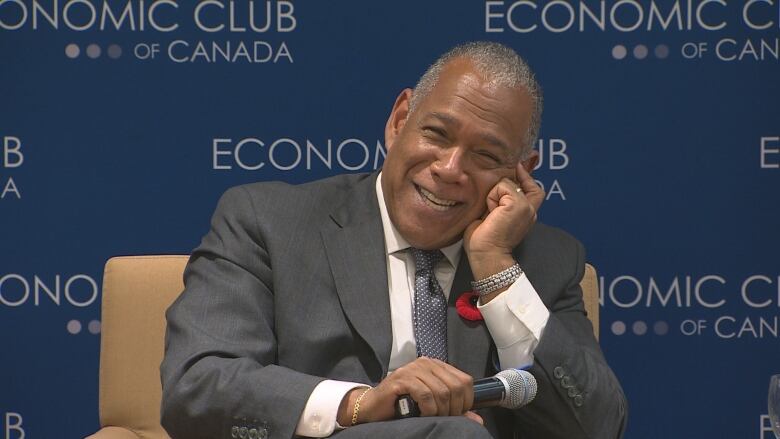No 'view tax' needed to pay for Rail Deck Park, Chief Planner Jennifer Keesmaat says
Chief planner Jennifer Keesmaat says the city can pay for Rail Deck Park without a view tax

Toronto's chief planner Jennifer Keesmaat says she's optimistic that sources of funding for the proposed Rail Deck Park can be found and the ambitious project can get built without the need for a "view tax."
Some people are advocating a levyon homeownerswholive nearamenitiessuch asparks,museums orconcert halls, because the view enhances the value of their properties. The revenue wouldcontribute to theconstruction and upkeep oflandmarks like Rail Deck Park.
Keesmaatsaidcity staff are crunching the numbers on the proposed 8.4-hectare green space that would be built over the waterfront rail corridor from Bathurst Street to Blue Jays Way. She is hopeful existing revenuetools will cover the price tag an estimated$1.05 billion or more.
She points to Section37 of the Planning Act, under which the city can require developers to help pay for neighbourhood amenities in exchange for the approval of their projects. There are also development charges that can help defray the cost, Keesmaatsays.
"When we collect that money, that money is dedicated to parkland. And we do have several hundred million already collected precisely for this purpose."
Gail Dexter Lord, co-president of Lord Cultural Resources, agreesthe capital costs are takencare of by Section 37 and other tools, but she says people who live close to parks benefit, so they should help pay for it.
"The capital costs are just one stage. The next stage is the day-to-day operation of that park. In seven years, that operational cost can equal the capital cost on average," said Lord. "Who better to help pay but the immediate neighbours?"
Lord's company works with park conservancies in the United States and Canada, which are philanthropic groups that raise money and work in partnership with cities to maintain and runpublic parks.

A view tax is "a good-neighbour policy" for those who own homes near parks and other amenities,Lord says.
"The more that park is looked after by the conservancy, the more their property value will increase when they go to sell, yet they are not contributing anything," said Lord.
And one consulting firm estimates that property values around the Rail Deck Park could riseby $908-millionshould it ever be built.
"Charge the people who stand to benefit the most nearby property owners," said Vijay Gill, the vice president for North America withCPCS, an infrastructure development consultancycompany.
"Doesn't it stand to reason that those property owners should be willing to pay for a substantial portion of the park?"
Mitchell Silver, theparks commissioner for New York City, says thefunding scheme has been used to build urban parks in U.S. cities.
"There are some states that allow what's called Special Assessment Districts, he said.They establish a district that will benefit close to the improvement being built. If the taxpayers are putting in, let's say, a billion dollars, those property owners get a windfall from the taxpayers' investment," Silver said.

He said property owners in the Special Assessment District pay a fee to offset the cost of the building that infrastructure.
"It's also called 'value capture' and I don't know if it's legal or allowed in Canada," Silver added.
But while Keesmaat agreesRail Deck Park would increase property values for those who own condos around it, she's hesitant to use a "view tax' or Special Assessment District to help pay for it.
"People who already live around this infrastructure are going to benefit because there will be significant uptick in value, but prices will go up and up and up," said Keesmaat. "So do you add an additional fee on top that makes it even more expensive to live in the downtown core?"
Keesmaatdoes agree, though,that philanthropy might play a role.

In New York City, conservancies play a role inhow parks are operated and maintained. These not-for-profit agencies raise funds and administer programming in city-owned parks.
And it's the model for the new Bentway Park that will run beneath the Gardiner Expressway from the foot of Spadina Avenue past Garrison Common and Fort York to Strachan Avenue.
While Keesmaat said she's encouraged that there is widespread support for the Rail Deck project.
"Rail Deck Park is the pinnacle, if you will, the central grand gesture," she said. "The opportunity really of a generation to create the last significant contiguous park space in the downtown."













_(720p).jpg)


 OFFICIAL HD MUSIC VIDEO.jpg)
.jpg)



























































































